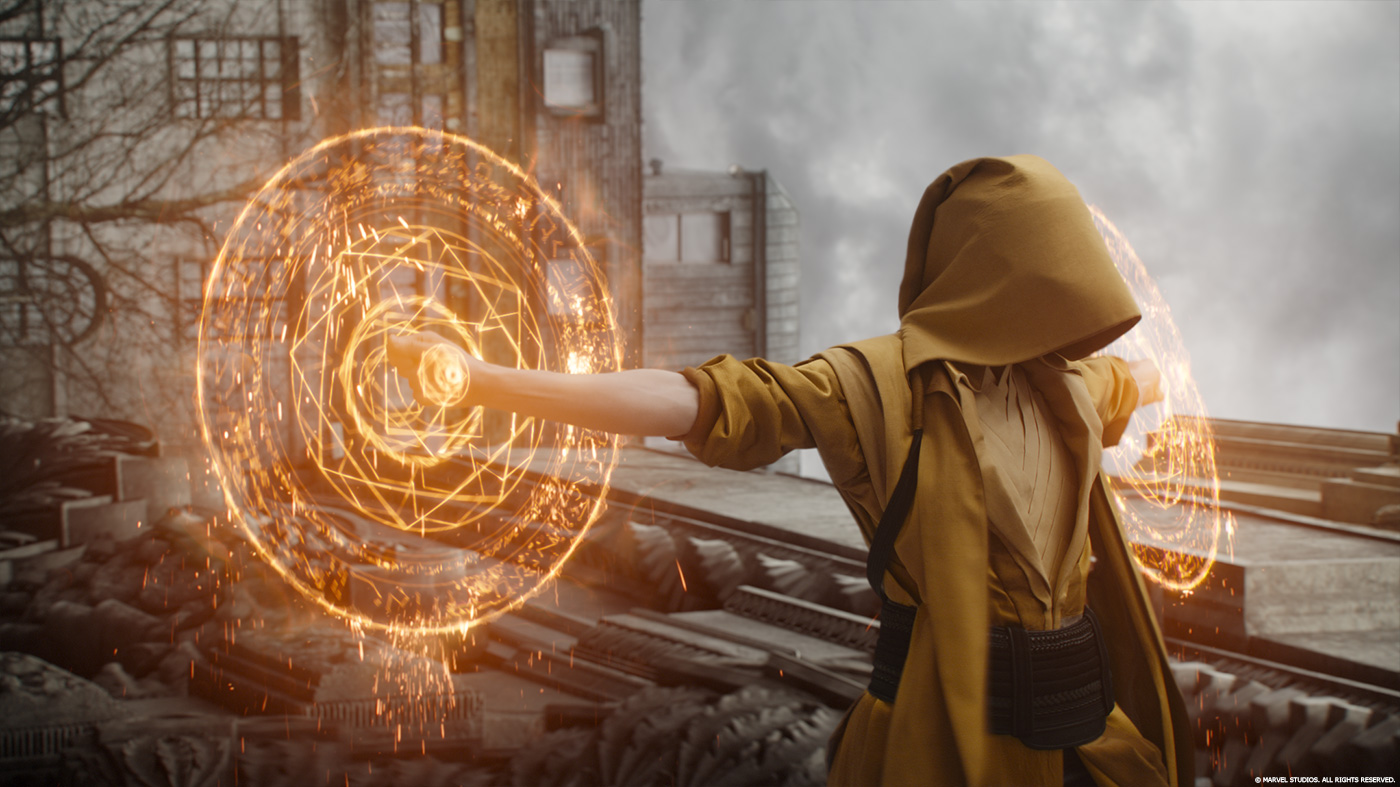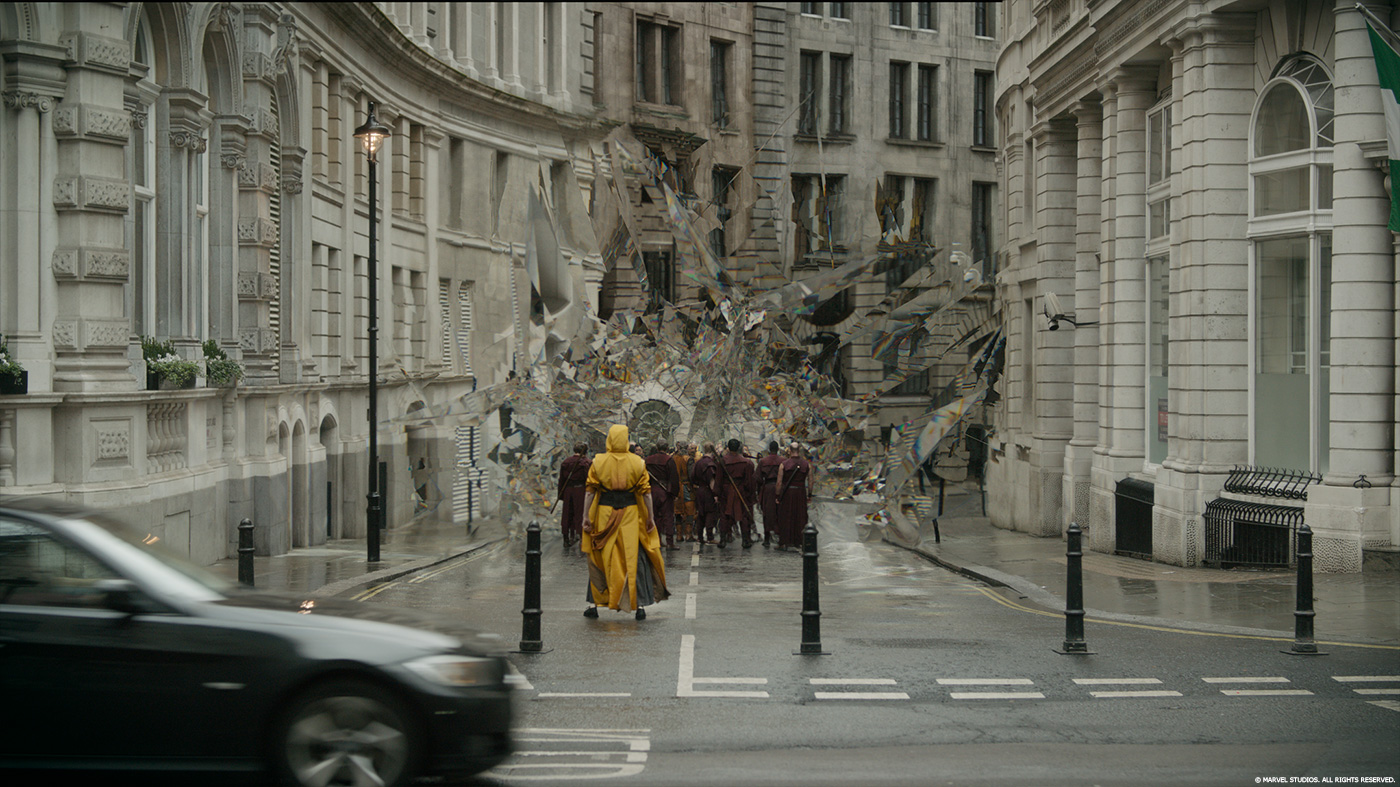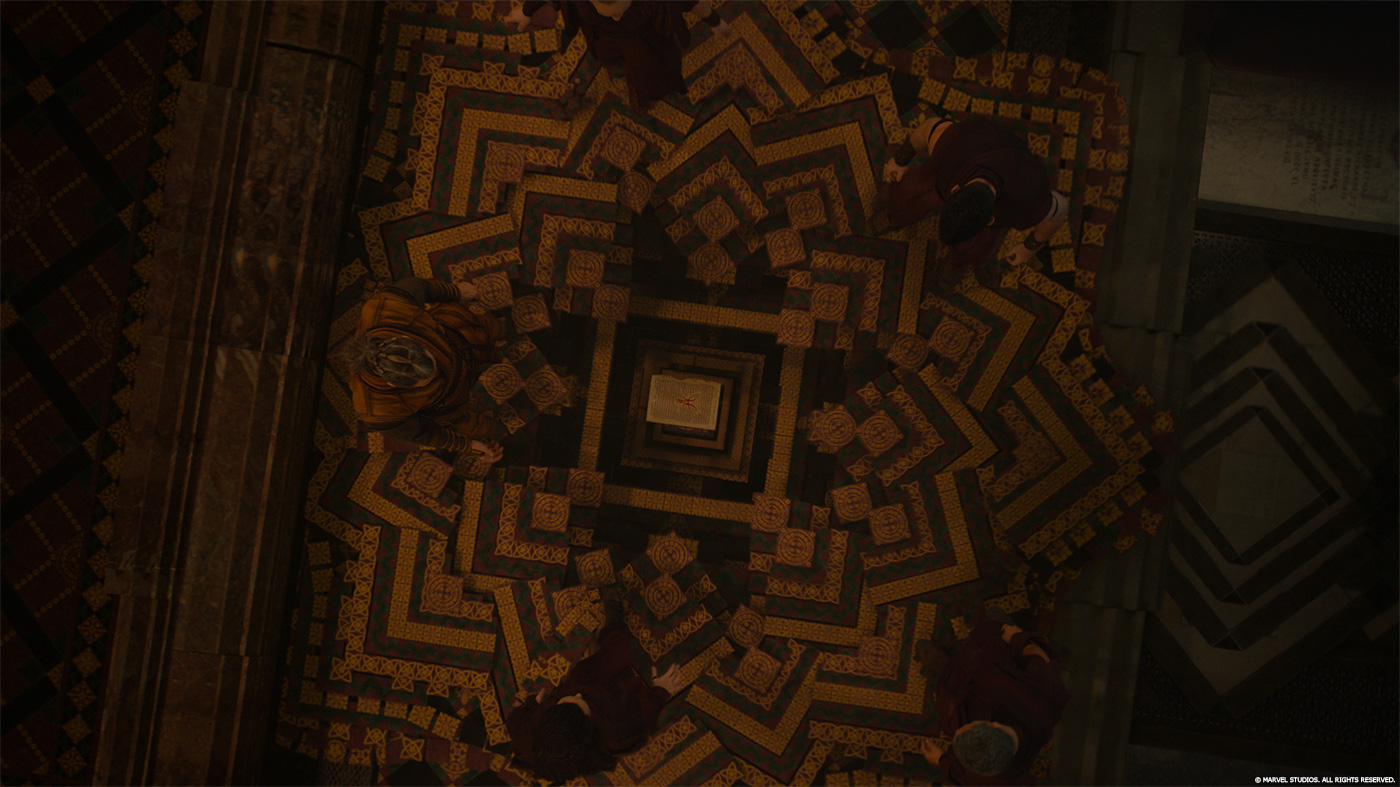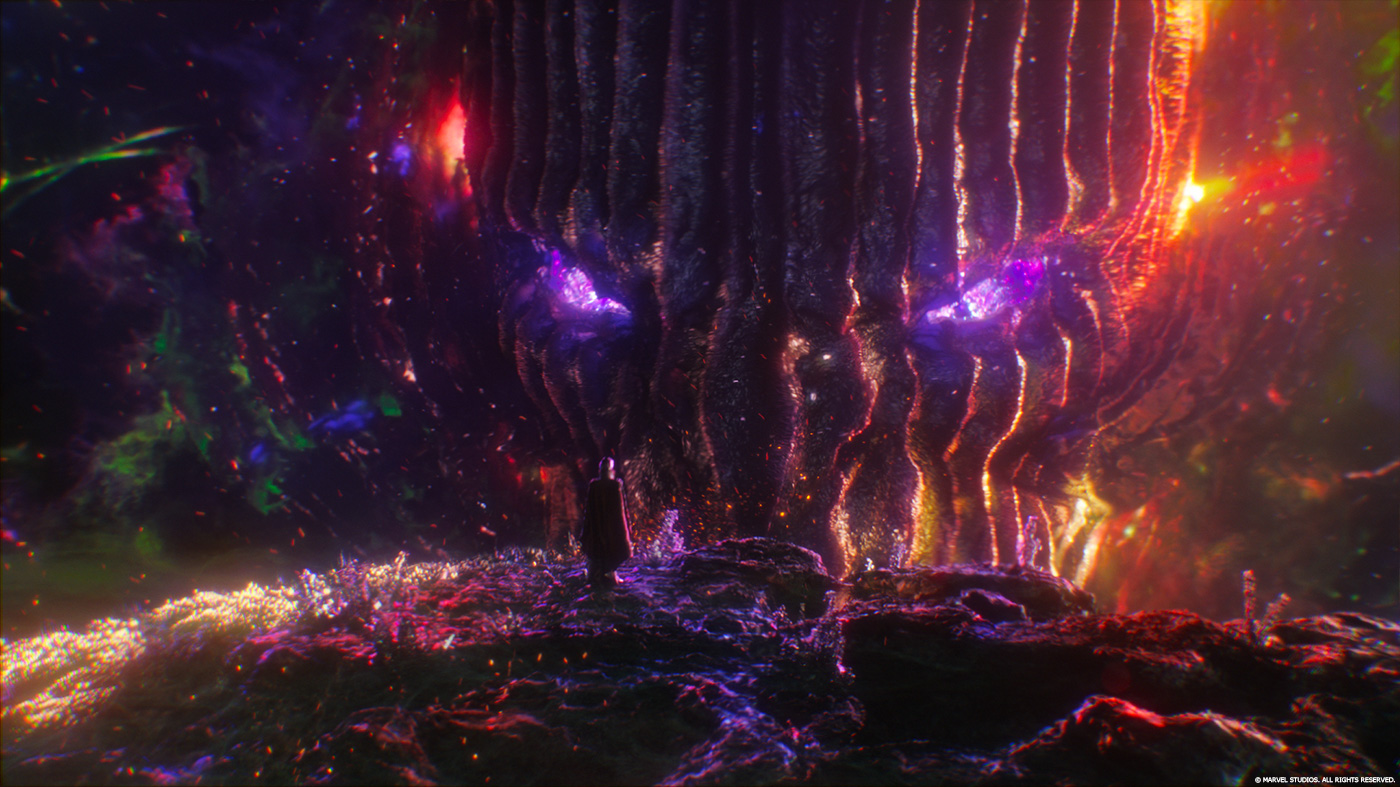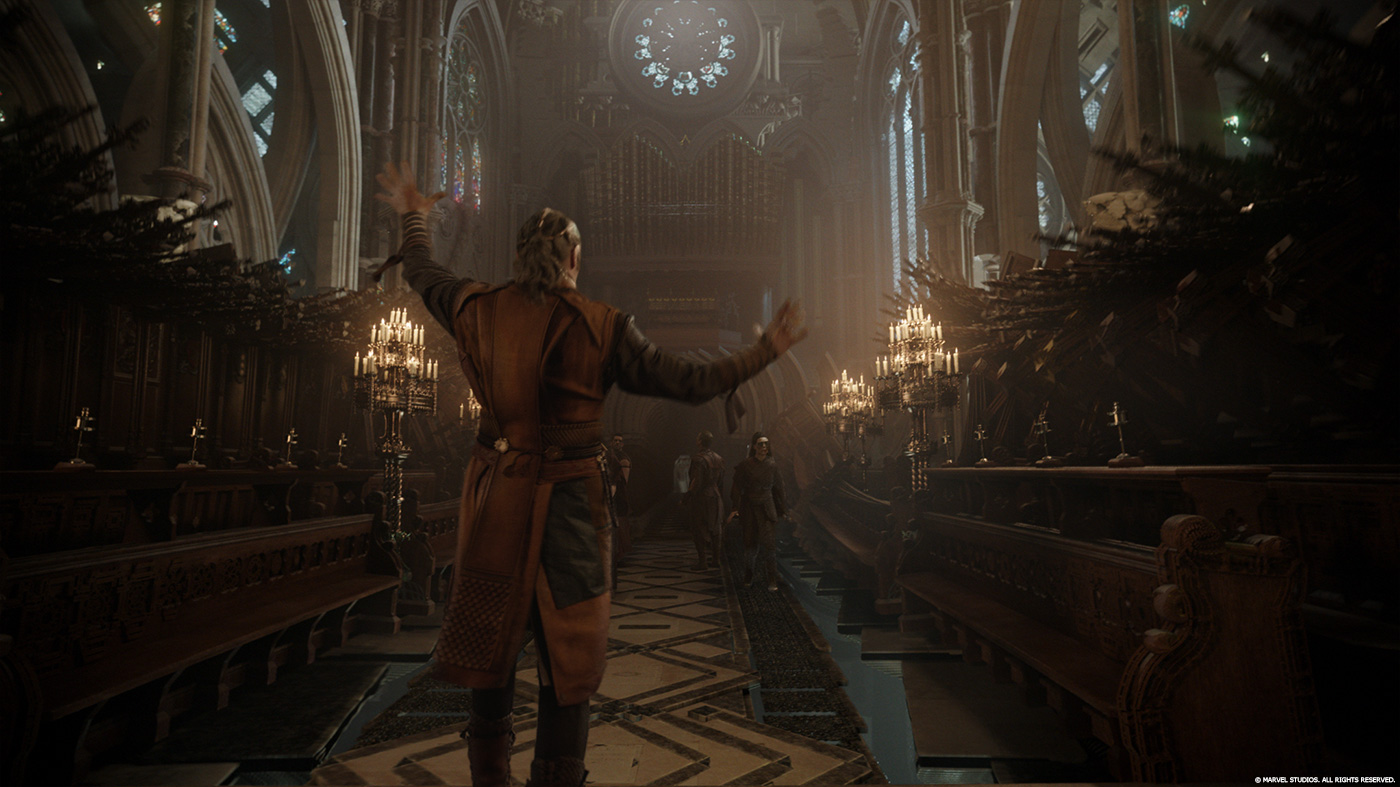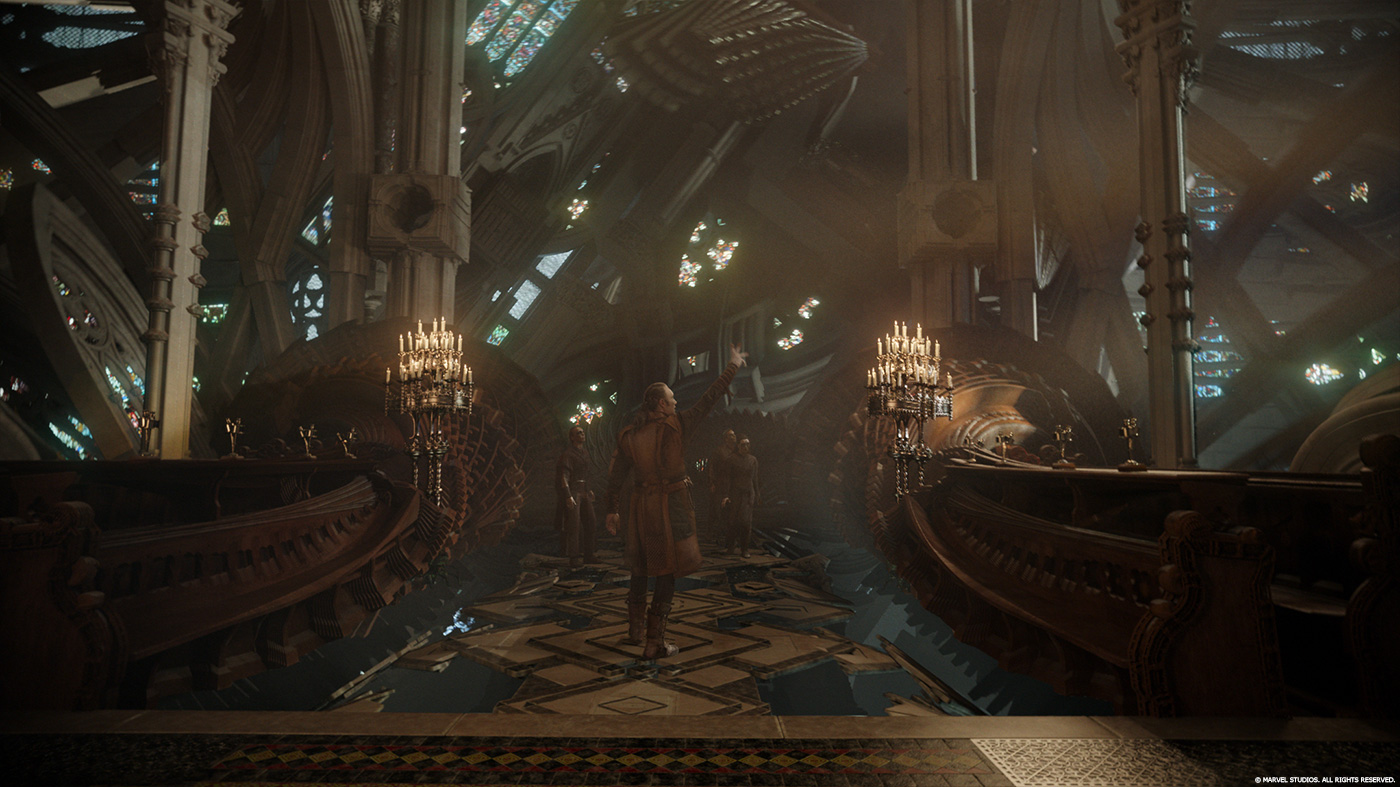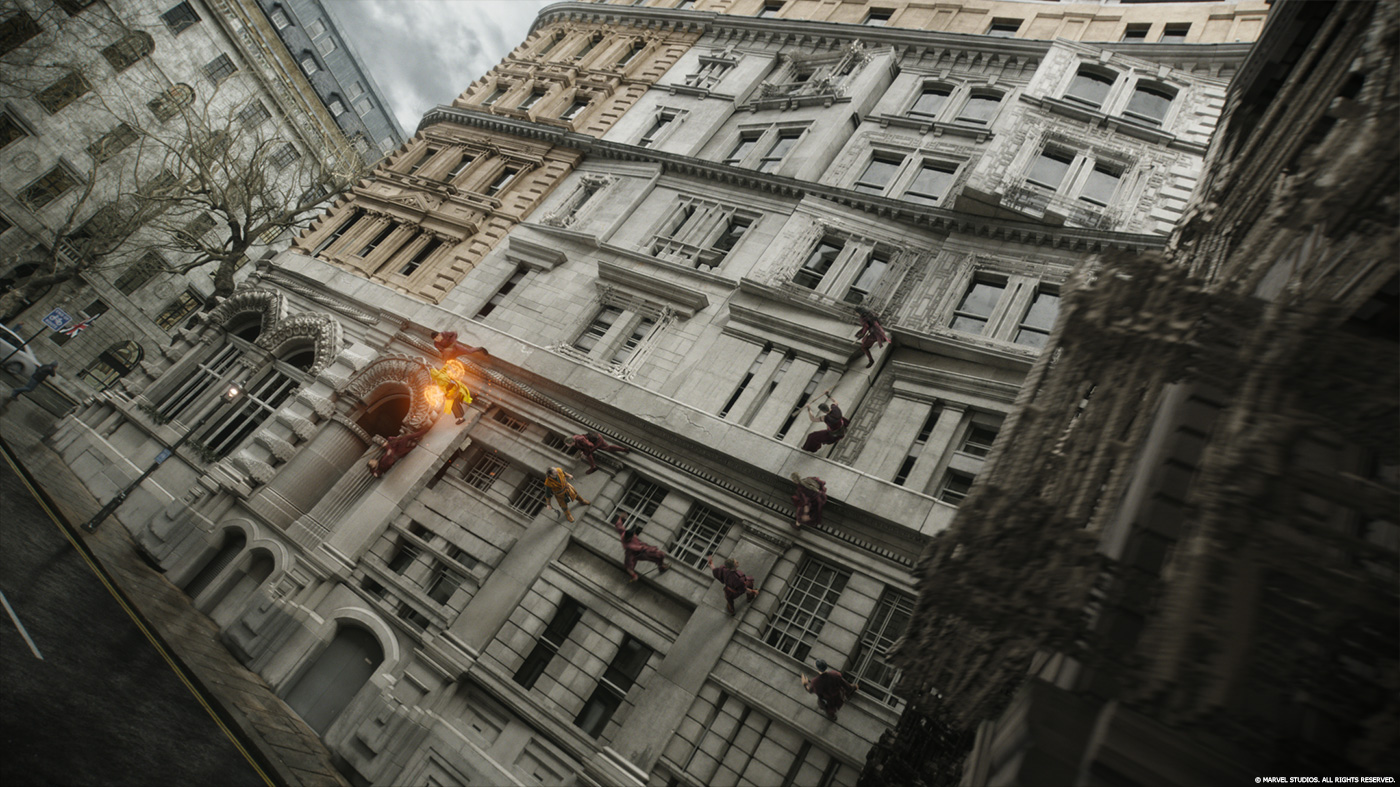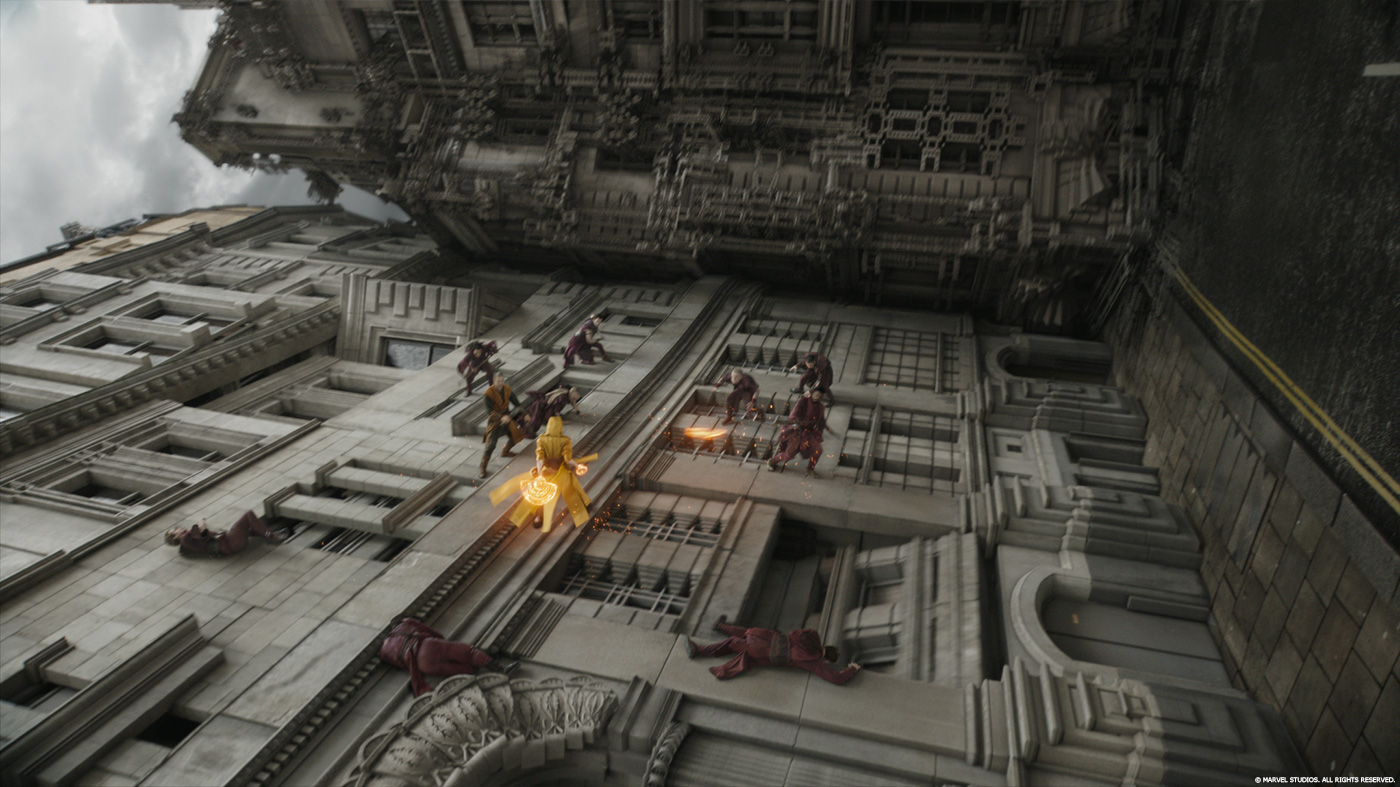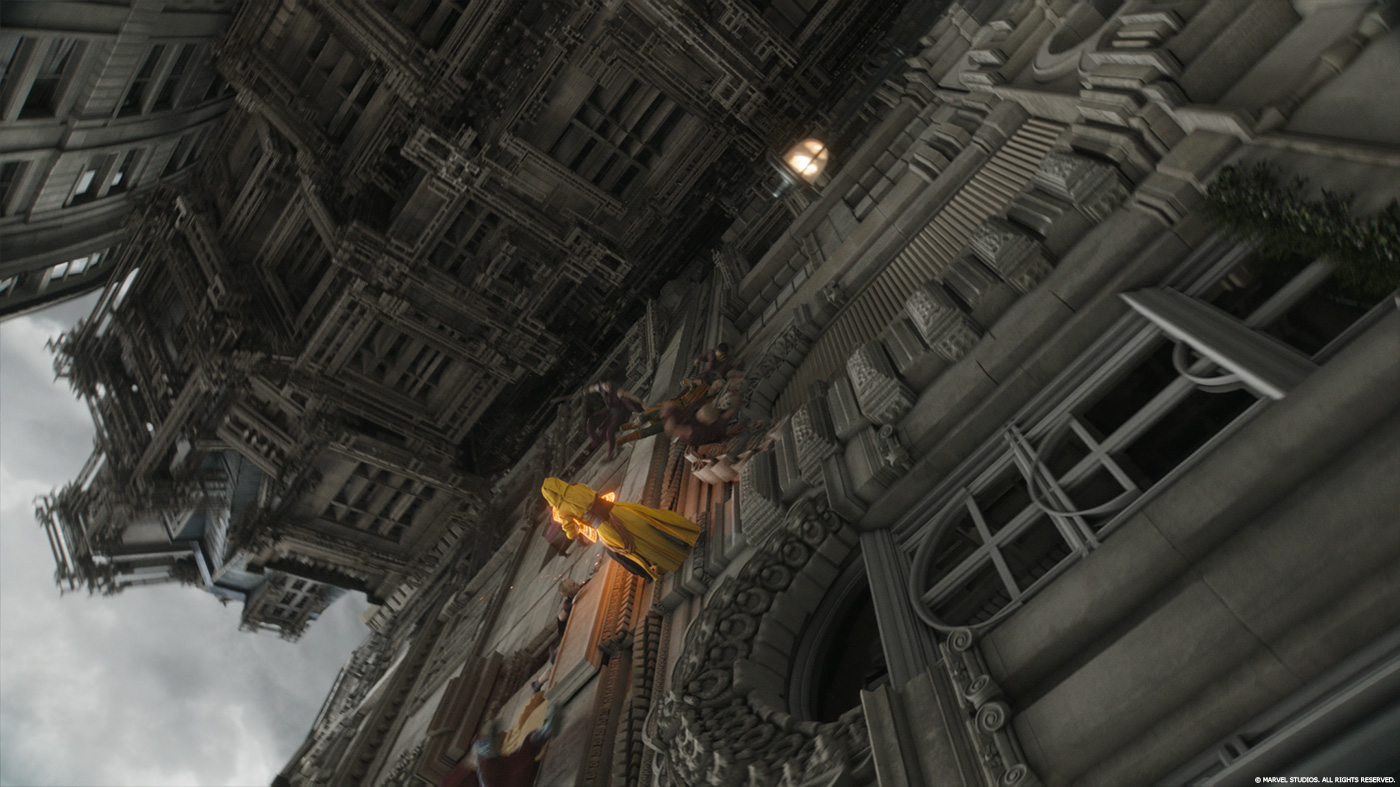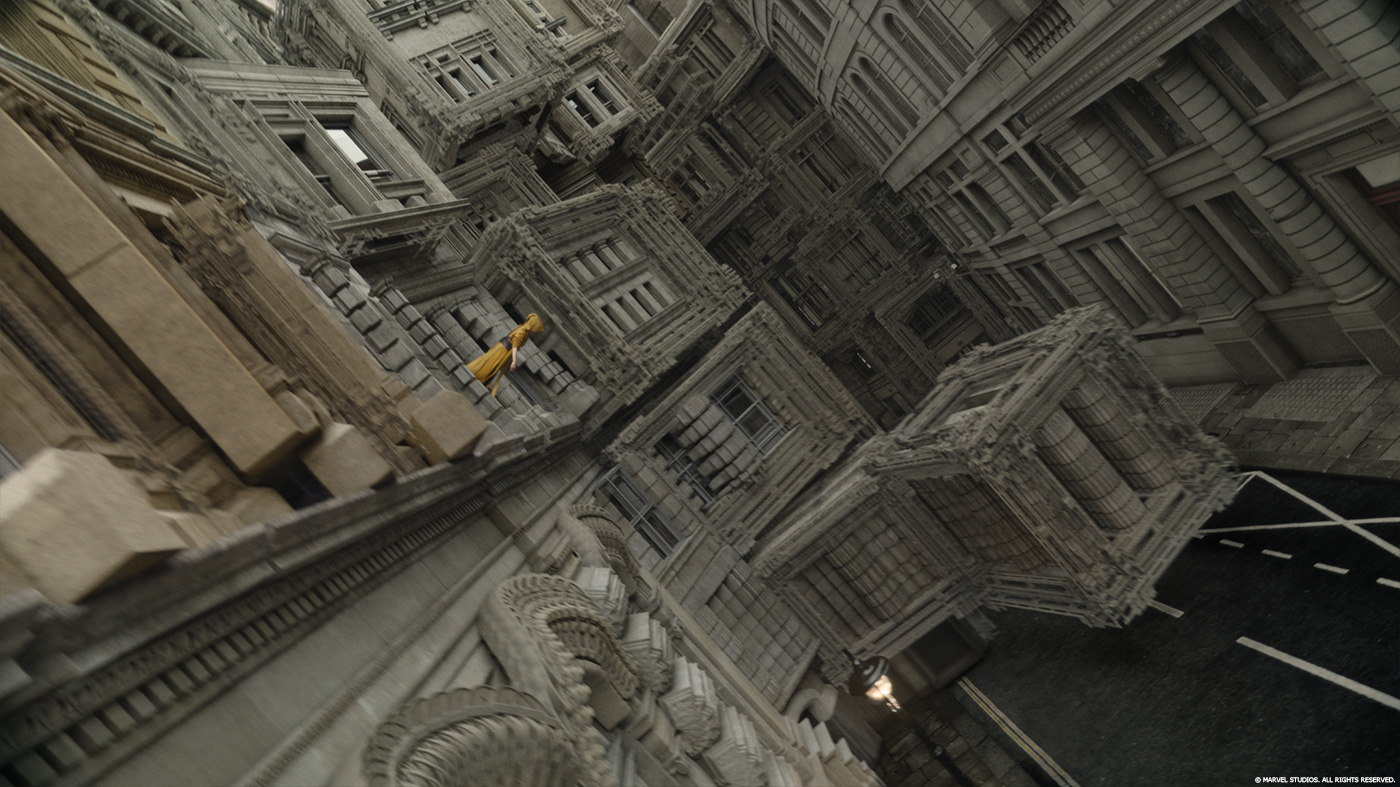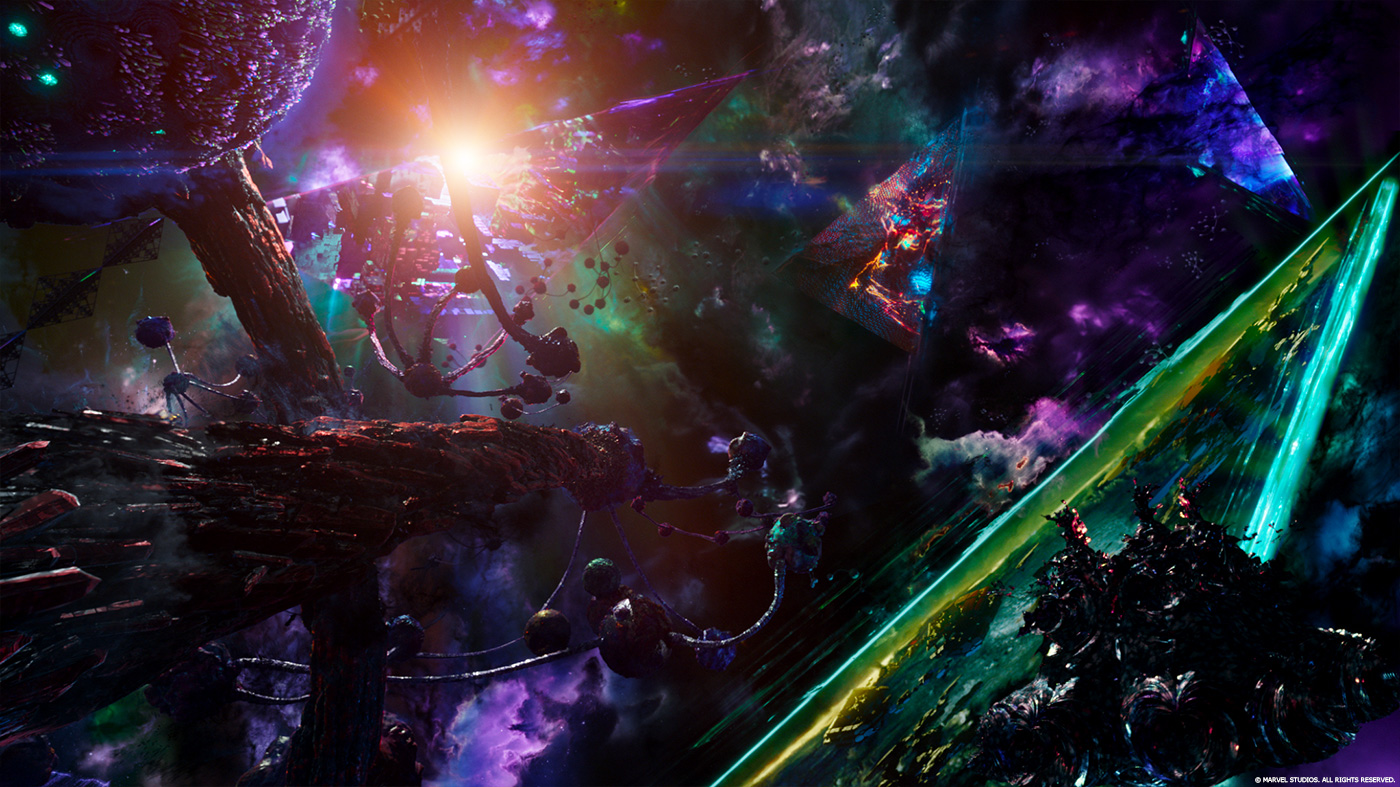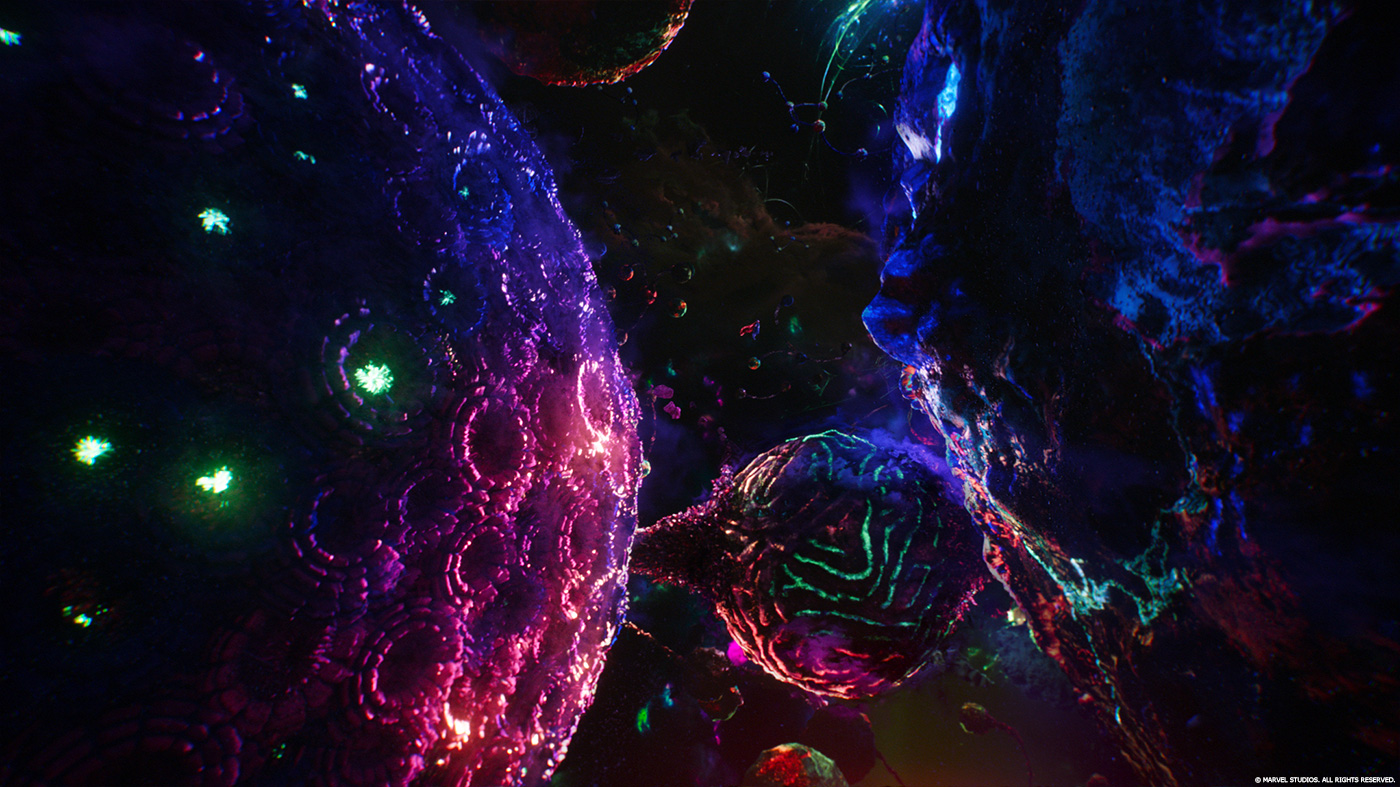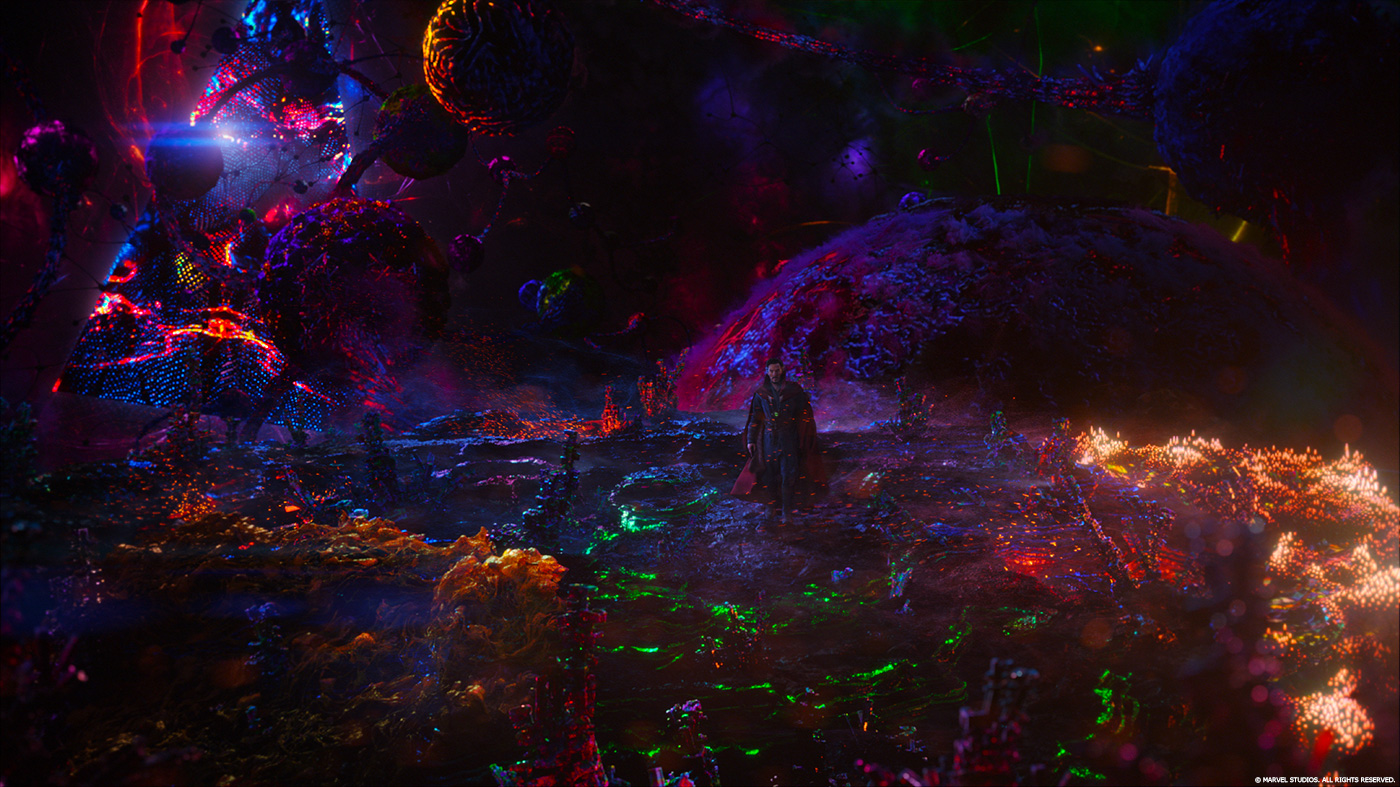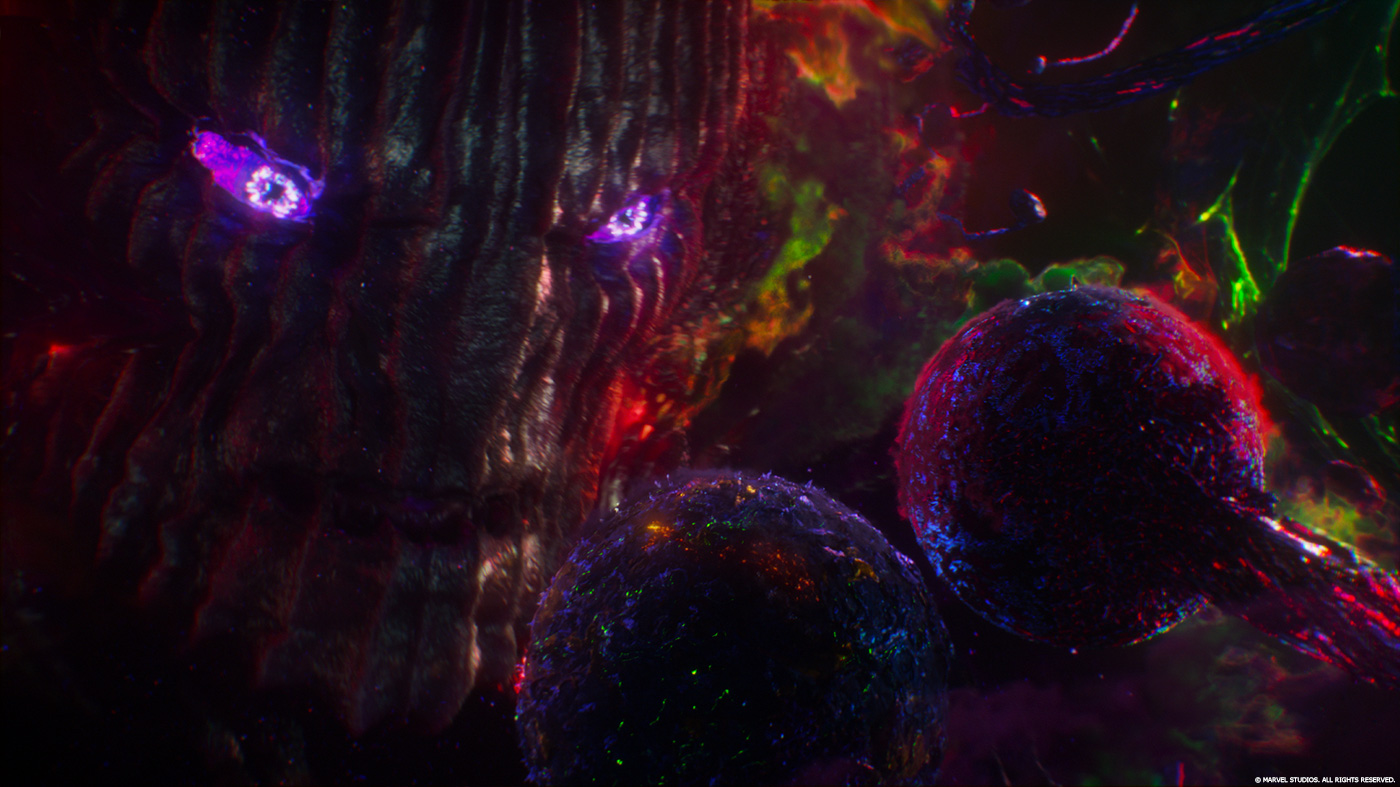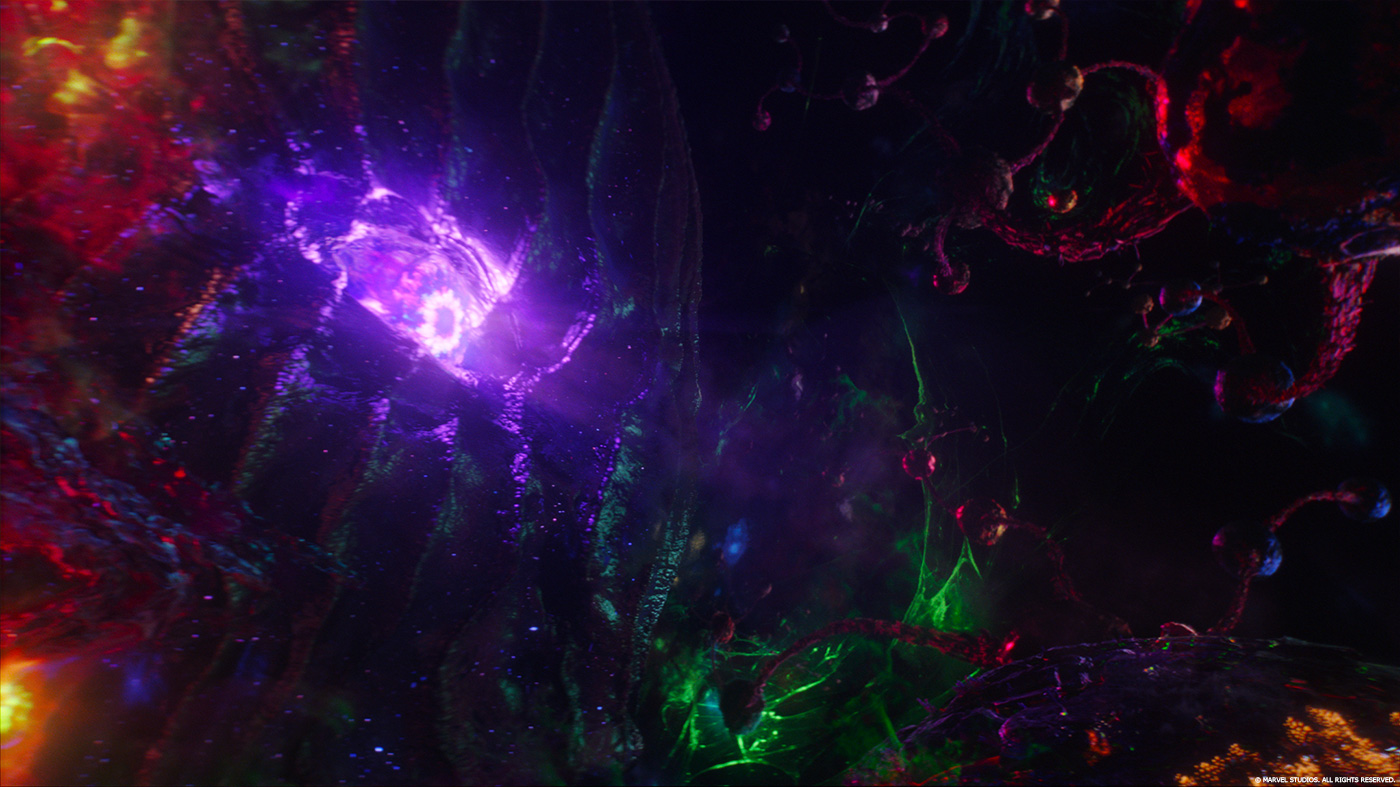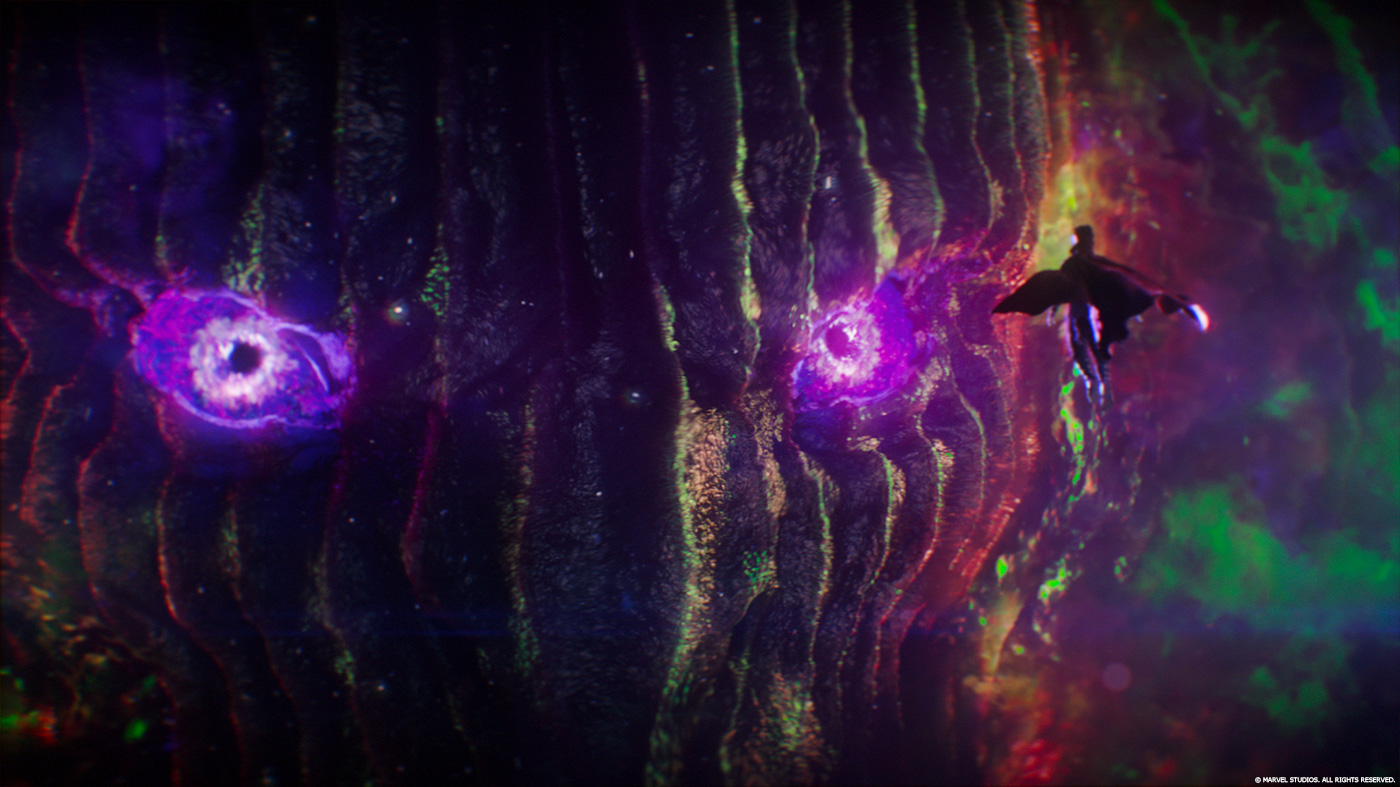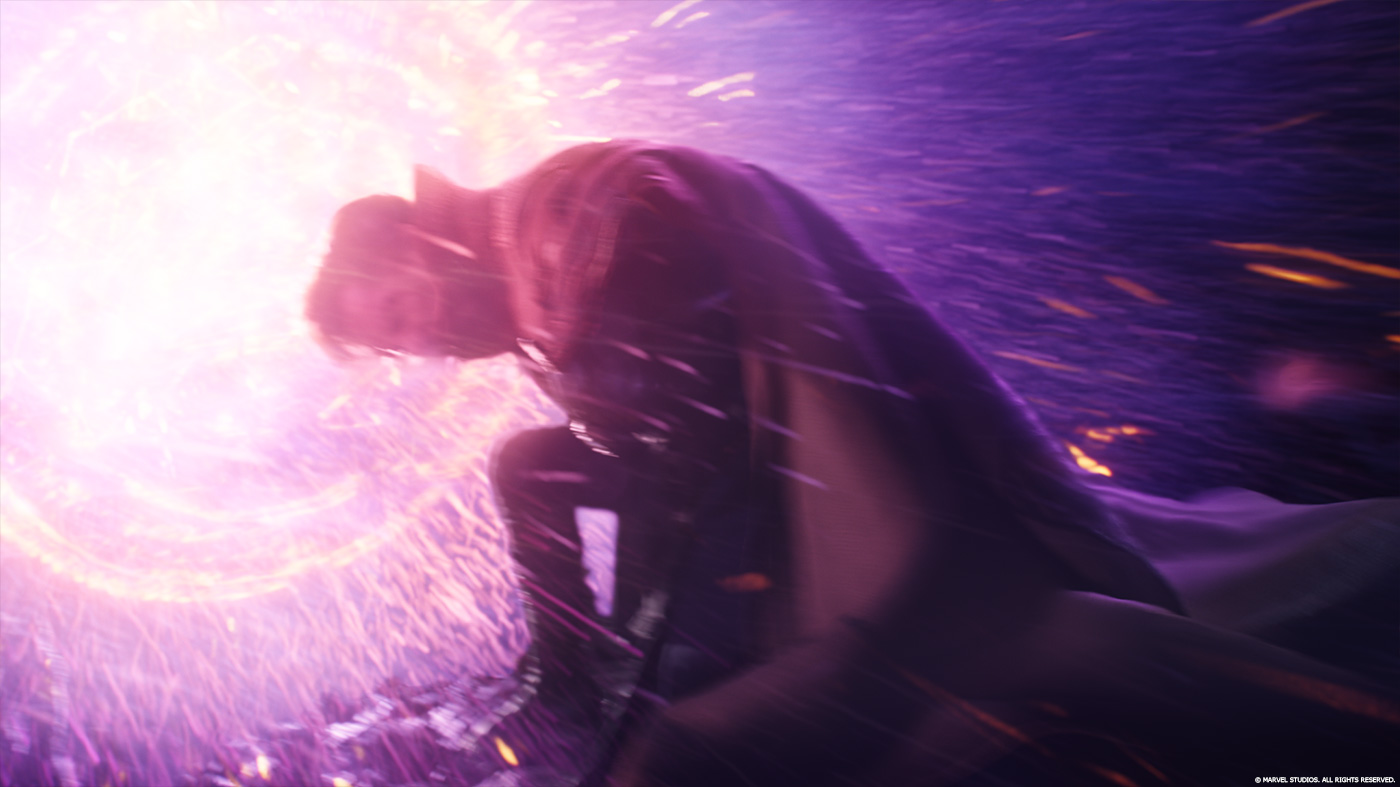Vincent Cirelli explained to us about the work of Luma Pictures on CAPTAIN AMERICA: CIVIL WAR earlier this year. He is now talking about his work on DOCTOR STRANGE.
How did you got involved on this show?
Luma had worked with Stef Ceretti and Susan Pickett on GUARDIANS OF THE GALAXY. Having established a relationship with them on that film, it was exciting to learn they had us in mind for DOCTOR STRANGE.
How was this collaboration with director Scott Derrickson and VFX Supervisor Stephane Ceretti?
They are both incredibly creative people, coming to the table with fantastic ideas, and pushing the bar with every step we took.
What was their approaches and expectations about the visual effects?
From the beginning, the expectations were incredibly high. The visual layout of the film, the density of effects coupled with complexity made this one special and stand out for me. Much of the film required new tech to choreograph, execute and visualize. The amorphous, dare I say strange (sorry) visuals required an incredible amount of artistic direction, per shot, per sequence, from every artist at the studio. It was clear to us from the inception, Marvel wanted to do something very, very different and uncharted with this film. This was incredibly exciting for us, and I’d imagine every facility on the film.
What are the sequences made by Luma?
Luma created the opening sequence of the film, where London kaleidoscopes, and mandelbrots into a crazy array of moving shapes during which the zealots are fought and chased by the Ancient One.
The next sequence on our list was the transforming Cathedral, where Kaecilius summons the power of Dormammu, and the church in all its glory with stained glass windows begins to spiral and open up as the fabric of reality is distorted by his power.
The final sequence we worked on was the dark dimension. We had the privilege of bookending the film and created the Dark Dimension and Dormammu himself.
How did you organize the work at Luma and amongst your different studios?
Luma has built tools over the years to allow for syncing and shot execution between the two studios. We split the work evenly between the studios, as they are mirrors of each other in terms of resources and infrastructure.
How did you approach the London sequence?
The London sequence is intense, and was being built around the same time we were creating the Kaleidoscoping / mandelbrotting effects for our Cathedral sequence you see in the first set of trailers. The team quickly learned that we would need tool development unlike anything we had done before. Our dev team, and the production team became one, marching in lockstep, it felt as though tools were being magically summoned just in time for us to implement into production using the eye of Agamotto. But in reality, it wasn’t the eye of Agamotto, it was an incredibly dedicated team of artists, and developers who pushed each other at a rapid rate.
Animation was the foundation of everything we did in these sequences. Brendan Seals, VFX sup in our Melbourne facility, myself, and Raphael Pimentel our animation supervisor decided to boil everything down to base level animation and then give animators tools to trigger the ridiculous layers of kaleidoscoping and mandelbrot thing. This ensured we’d have motion that was choreographed and felt organic and not procedural since the base layer was animated, and choreographed by humans.
Can you explain in detail about the creation of the London environment?
The London Environment was an immense dataset, built in detail to hold up from multiple angles. But what made this especially challenging is that the geo needed to translate, morph, deform, and every last piece of it would need to have back sides. For example, as the building begins to kaleidoscope like a giant wave towards the zealots, the interiors, and backside of all the brickwork needed to be modeled, this was brick that if not rotating and arraying, would have simply been invisible to camera.
How did you manage the shape changing and mandelbrot effects?
This was an endeavor headed up by Chad Dombrova, Pipeline Supervisor and Paul Molodowitch, Lead Pipeline TD and many others on our incredible team. They figured out a way for us to control fractals in animation which is no small feat. Controlling fractals in general initially seemed like an unmanageable task. Fractals by their very nature are procedural and are very hard to art direct, but they gave us a level of control we could never have expected. Using a set of tools for art direction, manipulation, and visualization allowed us to complete the demanding effects on the show. Our animators were the cornerstone of all of these sequences.
Did you used procedural tools for the mandelbrot effect?
Yes, the toolset was developed by our rigging team hand in hand with our development team and consisted of three main elements, the first one was arraying and control of base level geometry, the second was placement of the fractaling volumes and visualization, and third was the rendering shader/process which took geo with material properties and turned them into volumes.
How was filming the London sequence?
Stef handled the filming of the London sequence in conjunction with our DFX Supervisor, Justin Johnson. Together they delivered an immense set of data which helped us recreate London down to the door trip on buildings. The actors were choreographed with complex physical rigs which allowed for interaction as set pieces moved, slid, stretch and fractalize. However, anytime the actors had to defy gravity, by jumping or sliding through the sequence, it was often handed off to a digi-double.
Can you tell us more about the digi-doubles creation?
We had close to camera digis that had to stand up one-to one with the photography, so as you can imagine, we received scans, and then our team went to work with shaders, cloth sim, anim.
How did you handle the magic used by the Ancient One?
Houdini was our main tool for much of the magic work, using splines driving fluids, particles, etc. From the get go, the director and Stef wanted to make the magic as physical and real feeling as possible. So you’ll see a lot of magic where the sparks hit the ground and break off into smaller bits like molten metal.
How did you approach the Dark Dimension?
This was an amazing journey for us. It all started with original black light posters and artwork from Steve Ditko and an in depth brief by Stef and Scott. The original artwork was our guiding light. But to translate this trippy, rule breaking art from the 60s, it took every artist at Luma great care and love for this original work to take shape into multiple dimensions! It’s a landscape of crazy organisms, with immense detail trapped on floating landscapes, always moving, always changing.
We labored on every component, making rules, breaking them, making more rules, and then breaking them as well until we had something that would convey the danger of this world, and stay true to the original comic art. It was by far one of the most creative endeavors we’ve had the opportunity to partake in.
Did you receive specific references or indications beside the beautiful art of Steve Ditko?
This was up on every screen, spoken about, plotted, and discussed on a daily basis. It was our bible for the imagery.
Can you explain in details about its creation?
Scott wanted to make sure that we stayed true to the comic book, and the original artwork. Both Stef and Scott were strong in their convictions to make a piece that felt like a physical place, something tangible in an intangible dimension.
The Luma team began exploring all sorts of naturally occurring flora, insects, rock, you name it – anything that had vibrant colors but felt real when viewed in context. This was our base line for much of the materials that became the many planetoids you see in the film. We worked on, and talked about a multitude of physics defying events and organisms as we wanted the Dark Dimension to be different than anything you’ve ever seen in a film. We mapped texture and materials which worked well together, and tested rock formations, different gases, you name it. Luma essentially created a huge library of new elements that all had some pseudo science we cooked up behind it to lend legitimacy. It was consuming, and a hell of a lot of fun at the same time. Our team is incredibly collaborative, and many, many of their ideas are on the screen now. Thanks to them!
How did you manage the animation of so many elements?
Blood, sweat and tears… and a hell of a lot of tech and infrastructure. Our facility grew in amazing ways during the course of this film. Again, it’s the people that make these films, and our group was meticulous about what they wanted to create from an artistic standpoint.
Can you tell us more about the design and the creation of Dormammu?
Marvel and Stef had great focus for this character. Dormammu is an incredible character, the first time we created something that is truly a sum of all it’s parts. What I mean by that is that Dormammu is made from a ton of simulations driven by performance capture and hand keyed animation. For this character to exist, we needed multiple departments completing each other’s sentences. First was base layer animation, then liquefying Dormammu through a complex rigging technique, then FX layering. Lots and lots of FX layering all driven by the first step. Dormammu is indefinable, constantly changing shape, and dimension. At certain points you can see into other worlds through him, and then from other angles he may appear like a black liquid, and then at times, bit of energy seeps through him, all based on his emotion and performance.
All these properties change as the underlying performance changes in tone across the sequence. This was painstakingly choreographed and triggered through multiple tools and our wonderful artists’ imagination.
Jared Simeth, Associate VFX Supervisor led the charge on development of this creature, and in doing so succeeded in creating an eyepiece in the film which I think people will want to frame through when the film is released for home 🙂
Can you explain in detail about his rigging and animation?
We pulled as much of the underlying performance by Benedict Cumberbatch as was possible. It was important that we understood the emotion and dynamics of the character even though his shape would be this constantly evolving, multi-dimensional and always fluid mass. Again this was helmed by our rigging team, and Animation Supervisor, Raphael Pimentel, creating a way for the underlying surface to move like real skin, so that it was all properly grounded even though this surface would mostly trigger complex animation, deformer sets that made his face ripple like reality was distorting, and then directed through voluminous fluid energy.
What was the main challenge on the show and how did you achieve it?
This show was not only technically difficult, but I’d say that this is the most challenging show to create artistically. It has visuals unseen before, and there is no computer that simply allows for this. In my opinion, It was truly all the artists from all the studios that were able to visualize, plot a course and then sail into a void bringing with them some of the trippiest looking vfx in the theatres. Lots and lots of unique art development, outlandish discussions and a developers who all wanted to go on the journey together.
Was there a shot or a sequence that prevented you from sleep?
Yes, every single one of them. I don’t think there were any gimmies on this show for any facility.
What do you keep from this experience?
I felt an incredible sense of camaraderie with Scott, Stef, Marvel, and the other sups on the show. We were often on the phone with them, and they were always amazing to work with. ILM, Method, Framestore were fantastic, we all shared ideas, shared information and some shots. In all, I think we were very lucky to be working along side such a fantastic group of people.
How long have you worked on this film?
Refer to the eye of Agamotto 🙂
What was the size of your team?
We were just under 200 between.
What is your next project?
Not sure I can say 🙂
A big thanks for your time.
// WANT TO KNOW MORE?
– Luma Pictures: Official website of Luma Pictures.
© Vincent Frei – The Art of VFX – 2016


